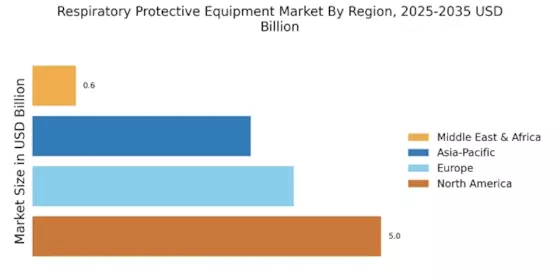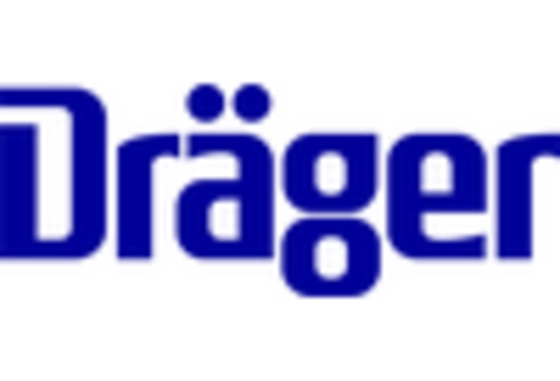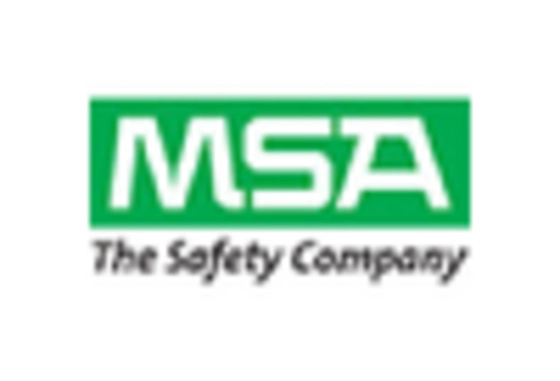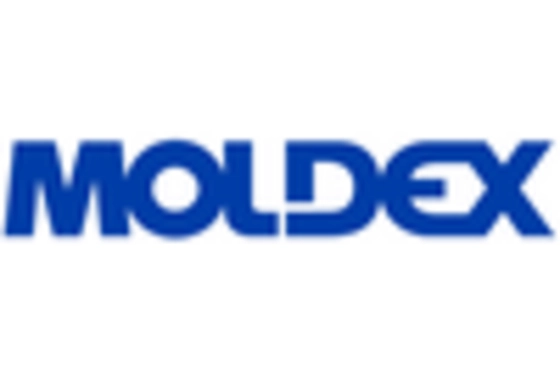Growth in Healthcare Sector
The Respiratory Protective Equipment Market is significantly benefiting from the expansion of the healthcare sector. As healthcare facilities prioritize the safety of their staff and patients, the demand for respiratory protective equipment is on the rise. This trend is particularly evident in hospitals and clinics, where the need for effective protection against airborne pathogens is paramount. The healthcare sector's growth is projected to continue, driven by an aging population and increasing healthcare expenditures. Consequently, this growth is expected to bolster the respiratory protective equipment market, as healthcare providers invest in high-quality protective gear to ensure safety and compliance with health regulations.
Rising Awareness of Air Quality Issues
The Respiratory Protective Equipment Market is also influenced by the growing awareness of air quality issues. With increasing pollution levels and the prevalence of respiratory diseases, individuals and organizations are becoming more conscious of the need for effective respiratory protection. This awareness is prompting both consumers and businesses to invest in high-quality respiratory protective equipment. According to recent data, the market is projected to grow at a compound annual growth rate of approximately 7% over the next few years, driven by this heightened focus on air quality and health. As a result, manufacturers are likely to innovate and enhance their product offerings to meet the evolving demands of consumers.
Increasing Industrial Safety Regulations
The Respiratory Protective Equipment Market is experiencing growth due to the rise in industrial safety regulations. Governments and regulatory bodies are increasingly mandating the use of respiratory protection in various sectors, including construction, manufacturing, and healthcare. This trend is driven by a heightened awareness of occupational hazards and the need to protect workers from airborne contaminants. For instance, the implementation of stricter guidelines by organizations such as OSHA has led to a surge in demand for respiratory protective equipment. As industries strive to comply with these regulations, the market for respiratory protective equipment is likely to expand, reflecting a commitment to worker safety and health.
Emerging Markets and Economic Development
Emerging markets are contributing to the growth of the Respiratory Protective Equipment Market. As economies develop, there is a corresponding increase in industrial activities, leading to a higher demand for respiratory protection. Countries with expanding manufacturing and construction sectors are particularly notable, as they often face challenges related to air quality and worker safety. The rising middle class in these regions is also becoming more aware of health and safety standards, further driving demand for respiratory protective equipment. This trend suggests a promising future for the market, as manufacturers look to capitalize on opportunities in these developing economies.
Technological Innovations in Respiratory Equipment
Technological advancements are playing a pivotal role in shaping the Respiratory Protective Equipment Market. Innovations such as smart respiratory devices equipped with sensors and real-time monitoring capabilities are gaining traction. These technologies not only enhance the effectiveness of respiratory protection but also improve user comfort and usability. The integration of advanced materials and design features is expected to drive market growth, as consumers seek more efficient and comfortable options. Furthermore, the introduction of customizable respiratory equipment tailored to specific industry needs is likely to attract a broader customer base, thereby expanding the market further.


















Leave a Comment